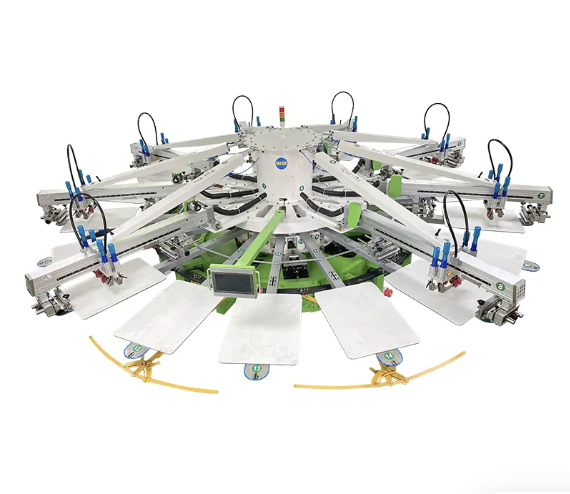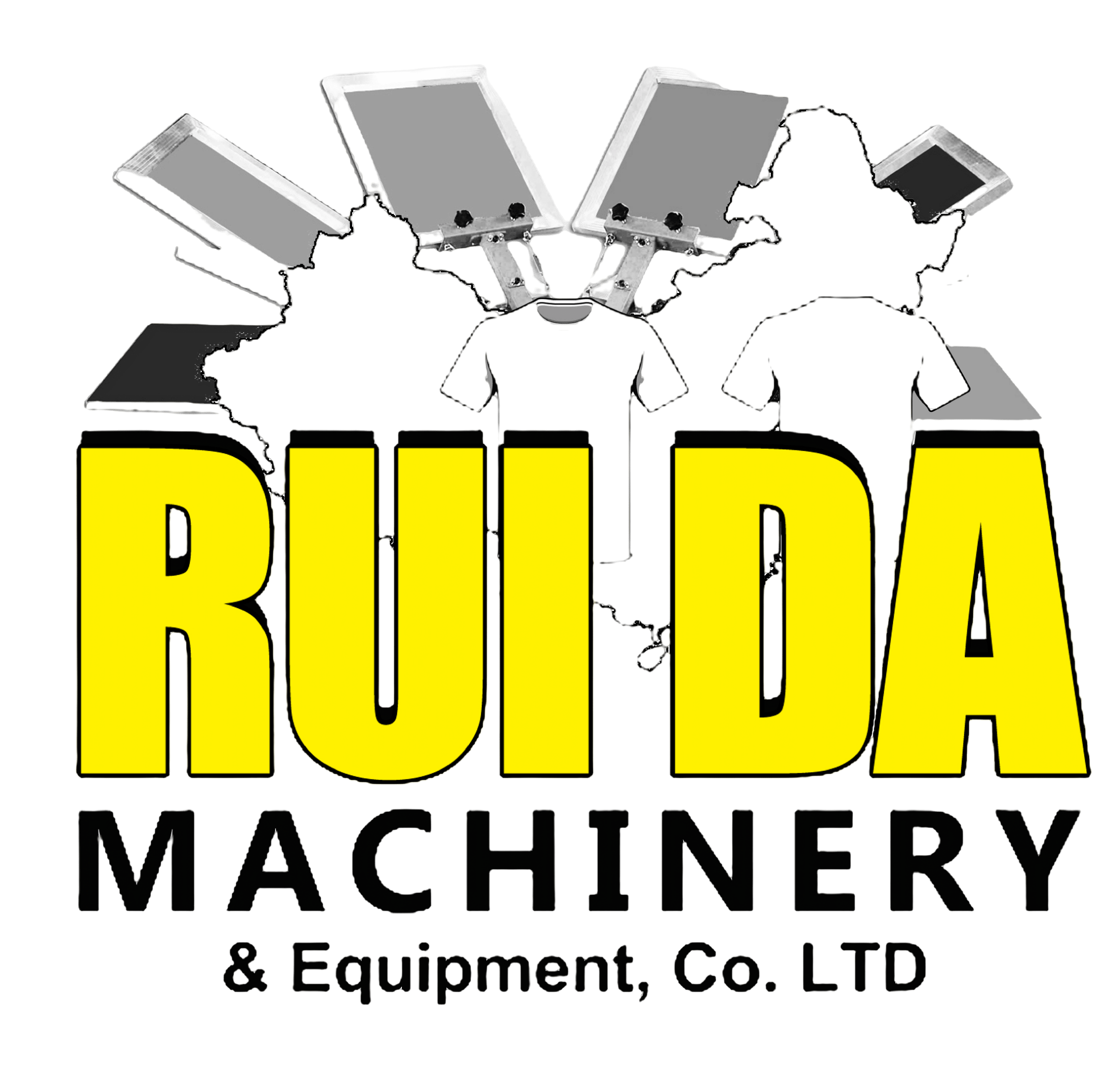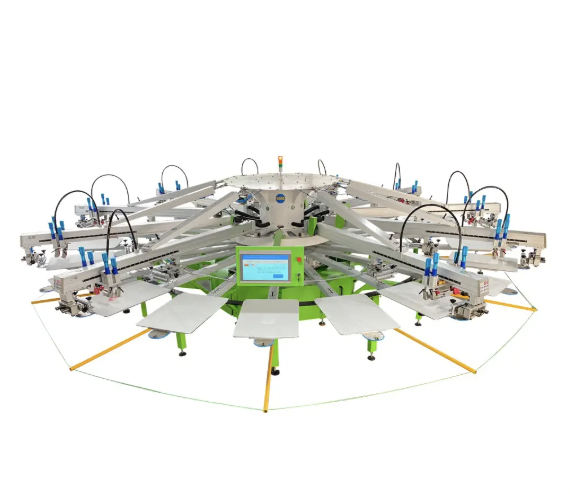ความคุ้มค่าและเงินลงทุนเริ่มต้นต่ำ
ไม่ต้องใช้ไฟฟ้าหรืออากาศอัด
เครื่องพิมพ์แบบซิลค์สกรีนชนิดใช้แรงงานคนไม่จำเป็นต้องใช้ไฟฟ้าหรืออากาศอัดในการทำงาน ซึ่งช่วยลดต้นทุนค่าใช้จ่ายที่เกี่ยวข้องได้มาก สำหรับธุรกิจที่เพิ่งเริ่มต้นนั้น หมายความว่าพวกเขาไม่จำเป็นต้องลงทุนในระบบสาธารณูปโภคพิเศษต่าง ๆ ตั้งแต่วันแรกที่เริ่มดำเนินการ เนื่องจากเครื่องจักรประเภทนี้ไม่ต้องพึ่งพาอุปกรณ์ที่ใช้พลังงานไฟฟ้าจำนวนมาก บริษัทจึงสามารถประหยัดเงินไว้ใช้จ่ายในสิ่งอื่น ๆ ที่จำเป็น เช่น แคมเปญโฆษณา หรือการซื้อวัสดุเพิ่มเติมเมื่อมีความต้องการ นี่จึงเป็นเหตุผลที่ทำให้ธุรกิจขนาดเล็กจำนวนมากเลือกใช้เครื่องพิมพ์ซิลค์สกรีนแบบใช้แรงงานคนในช่วงเริ่มต้น เพื่อจัดการงบประมาณอย่างรอบคอบ
ค่าใช้จ่ายอุปกรณ์เริ่มต้นน้อยเมื่อเปรียบเทียบกับระบบอัตโนมัติ
อุปกรณ์พิมพ์หน้าจอแบบแมนนวลโดยทั่วไปมีราคาถูกกว่าเครื่องจักรแบบอัตโนมัติอย่างมาก ซึ่งทำให้เหมาะสำหรับร้านค้าขนาดเล็กหรือศิลปินที่ทำงานภายใต้งบประมาณจำกัด ผู้คนส่วนใหญ่ต้องการอะไรบ้างในการเริ่มต้น เพียงแค่หน้าจอ หมึกพิมพ์ ยางปาด และอาจมีกรอบพื้นฐาน ชิ้นส่วนเหล่านี้สามารถหาซื้อได้โดยไม่ต้องใช้เงินจำนวนมาก มีร้านพิมพ์จำนวนมากที่เริ่มต้นด้วยวิธีนี้ในช่วงที่มีข้อจำกัดด้านการเงิน การดูจำนวนธุรกิจที่เติบโตขึ้นมาจากจุดเริ่มต้นที่เรียบง่ายนั้น บ่งชี้ให้เห็นว่าการเริ่มต้นจากสิ่งเล็กๆ น้อยๆ นั้นได้ผลจริงสำหรับผู้ที่ต้องการก้าวเข้าสู่วงการพิมพ์แบบซิลค์สกรีน โดยไม่ต้องลงทุนก้อนโตในช่วงแรก
จุดคืนทุนเร็วสำหรับธุรกิจใหม่
คู่มือ เครื่องพิมพ์หน้าจอ ไม่ต้องใช้เงินลงทุนก้อนโตในช่วงเริ่มต้น ซึ่งหมายความว่าธุรกิจใหม่สามารถถึงจุดคุ้มทุนได้เร็วขึ้น และเริ่มเห็นผลตอบแทนจากการลงทุนเร็วกว่าทางเลือกอื่นๆ ตามข้อมูลตลาดจาก PrintTech Insights ระบุว่า ร้านขนาดเล็กส่วนใหญ่สามารถคืนทุนค่าเครื่องจักรได้หลังจากทำงานพิมพ์ไปเพียงไม่กี่งาน โดยเฉพาะช่วงเทศกาลหรือกิจกรรมพิเศษที่มีงานเข้ามาอย่างต่อเนื่อง เมื่อเจ้าของรู้แน่ชัดว่าต้นทุนวัสดุและค่าแรงอยู่ที่เท่าไร ก็สามารถตั้งราคาสินค้าได้อย่างเหมาะสมมากขึ้น ซึ่งจะช่วยให้เงินทุนหมุนเวียนกลับเข้ามาเร็วขึ้น สำหรับผู้เริ่มต้นธุรกิจที่ต้องการทำกำไรโดยไม่ต้องลงทุนสูง มืออาชีพส่วนใหญ่ยังคงแนะนำให้เลือกการพิมพ์สกรีนแบบธรรมดาเป็นหนึ่งในทางเลือกที่ดีที่สุดในปัจจุบัน
ขนาดกะทัดรัดและความยืดหยุ่นในการดำเนินงาน
การออกแบบประหยัดพื้นที่สำหรับโรงรถ/สตูดิโอขนาดเล็ก
อุปกรณ์พิมพ์หน้าจอแบบแมนนวลมีให้เลือกในรูปแบบโมดูลาร์และขนาดกะทัดรัด เหมาะสำหรับใช้ในสตูดิโอขนาดเล็ก หรือแม้กระทั่งโรงรถภายในบ้าน การออกแบบที่ประหยัดพื้นที่ช่วยให้นักออกแบบและเจ้าของธุรกิจขนาดเล็กสามารถใช้ประโยชน์จากพื้นที่ที่มีอยู่ได้อย่างเต็มที่ แม้จะมีขนาดเล็ก แต่อุปกรณ์เหล่านี้ยังคงให้คุณภาพของการพิมพ์ที่ไม่แพ้เครื่องจักรขนาดใหญ่เลย สำหรับผู้ที่ไม่สามารถเข้าถึงพื้นที่เชิงพาณิชย์ขนาดใหญ่ได้ ความยืดหยุ่นแบบนี้คือสิ่งที่สร้างความแตกต่างอย่างแท้จริง ความคิดสร้างสรรค์ไม่จำเป็นต้องใช้พื้นที่ขนาดใหญ่หรือมีราคาแพง เมื่อเครื่องมือที่เหมาะสมสามารถวางไว้บนโต๊ะทำงานขนาดเล็กได้อย่างสะดวกสบาย
ความสามารถในการเคลื่อนย้ายสำหรับบริการพิมพ์เคลื่อนที่/กิจกรรม
เครื่องพิมพ์แบบซิลค์สกรีนมือมีน้ำหนักเบาพอที่จะเคลื่อนย้ายได้ ซึ่งให้ความยืดหยุ่นแก่ธุรกิจในการให้บริการแบบเคลื่อนที่ นั่นหมายความว่าบริษัทสามารถขยายตลาดของตนเอง และสร้างสรรค์สิ่งของโปรโมตที่น่าสนใจได้ทันที ณ สถานที่จัดงาน ศิลปินที่ไปร่วมงานอีเวนต์หรืองานแสดงสินค้าต่างได้รับประโยชน์จากความคล่องตัวนี้ โดยสามารถปรับเปลี่ยนสิ่งที่นำมาขายได้ตามความต้องการของผู้คนในพื้นที่นั้นๆ เมื่อผู้พิมพ์นำอุปกรณ์ไปให้บริการถึงลูกค้าโดยตรงแทนที่จะรอให้ลูกค้ามาหา แบรนด์ก็จะได้รับการรับรู้อย่างเป็นธรรมชาติมากยิ่งขึ้น นอกจากนี้ การได้พูดคุยและพบปะแบบตัวต่อตัวยังช่วยสร้างความสัมพันธ์ที่ดีกับลูกค้าซึ่งอาจกลายเป็นลูกค้าประจำในอนาคต
ความสามารถในการปรับตัวให้เข้ากับพื้นที่ทำงานที่ไม่สม่ำเสมอ
การตั้งค่าเครื่องพิมพ์แบบแมนนวลสามารถทำงานได้ดีมากในพื้นที่แปลกๆ ที่คนอื่นไม่ค่อยนึกถึง การติดตั้งแบบนี้เคยถูกใช้ในโกดังเก่าๆ โรงยิมของโรงเรียน หรือแม้แต่ในสนามหลังบ้าน ซึ่งอุปกรณ์มาตรฐานทั่วไปคงติดตั้งไม่ได้ จุดประสงค์หลักคือความยืดหยุ่นที่ช่วยให้ศิลปินหลากหลายคนทำงานร่วมกันได้ โดยไม่ต้องกังวลกับสภาพแวดล้อมที่สมบูรณ์แบบ เรามักเห็นกลุ่มคนแบ่งปันหมึกและตะแกรงพิมพ์กันในศูนย์ชุมชนที่พื้นที่จำกัด แต่ความคิดสร้างสรรค์กลับเติบโตอย่างมาก เครื่องพิมพ์แบบแมนนวลเหล่านี้สามารถจัดการมุมที่แปลกและรูปแบบการวางที่ไม่สะดวกต่างๆ ได้ดี เพราะไม่ต้องการเส้นตรงและพื้นเรียบที่ระบบอัตโนมัติต้องการ สำหรับผู้ที่พยายามสร้างสรรค์งานศิลปะภายใต้งบประมาณจำกัด หรือในสถานที่ไม่คาดคิด ระบบที่ตั้งค่าแบบนี้จะสร้างสิ่งพิเศษขึ้นมา นั่นคือสภาพแวดล้อมที่การทดลองคือสิ่งสำคัญกว่าความสมบูรณ์แบบ และเทคนิคใหม่ๆ เกิดจากความจำเป็นมากกว่าเทคโนโลยีที่ทันสมัย
สำหรับการเข้าใจอย่างลึกซึ้งเกี่ยวกับ เครื่องพิมพ์หน้าจอแบบแมนนวล ตัวเลือกและการกำหนดข้อมูลจำเพาะของผลิตภัณฑ์อย่างละเอียด คุณสามารถสำรวจ **DGRUIDA NS1212-HD Heavy Duty Double-Station Screen Printing Press** [ได้ที่นี่](#) เครื่องมือเหล่านี้ช่วยให้เข้าใจถึงวิธีการบรรลุความยืดหยุ่นในการดำเนินงานด้วยการพิมพ์หน้าจอแบบแมนนวล
การควบคุมเชิงศิลปะและความสามารถในการปรับแต่ง
การปรับระดับหมึกสัมผัสสำหรับผลลัพธ์เนื้อผิว
ด้วยการพิมพ์หน้าจอแบบทำมือ ศิลปินจะได้อะไรบางอย่างที่พิเศษจริง ๆ นั่นคือการควบคุมปริมาณหมึกที่จะลงบนผ้าอย่างเต็มที่ ระดับการควบคุมเช่นนี้ทำให้ความคิดสร้างสรรค์ไหลลื่นอย่างอิสระ เมื่อพวกเขาได้สัมผัสหน้าจอจริง ๆ และรู้สึกถึงการเคลื่อนตัวของหมึกผ่านหน้าจอ ช่วยเปิดโอกาสหลากหลายสำหรับงานเนื้อผ้าที่มีลวดลายพิเศษ กระบวนการทั้งหมดรู้สึกแตกต่างจากแค่การกดปุ่มเครื่องจักร ศิลปินจึงสร้างผลงานที่ไม่เหมือนใครซึ่งดึงดูดสายตาผู้คน เพราะผลงานแต่ละชิ้นไม่มีทางออกมาเหมือนกันเลย การทดลองเล่นกับปริมาณหมึก หมายถึงการทดลองกับเนื้อผ้าและผลลัพธ์ทางสายตาที่น่าสนใจหลากหลาย ซึ่งเพิ่มมิติให้กับงานพิมพ์ สำหรับผู้สร้างสรรค์หลายคน องค์ประกอบที่ต้องใช้มือนี้คือสิ่งที่ทำให้การพิมพ์แบบหน้าจอคุ้มค่ามาก ทุกชิ้นงานที่เสร็จสมบูรณ์กลายเป็นการแสดงออกอย่างแท้จริงของสิ่งที่อยู่ในหัวของพวกเขาตั้งแต่เริ่มต้น

เทคนิคการดึงด้วยมือสำหรับการออกแบบที่มีความแปรผันตามธรรมชาติ
เมื่อศิลปินดึงไม้ปาดน้ำออกจากเครื่องพิมพ์สกรีนด้วยมือ สิ่งพิเศษก็เกิดขึ้น กระบวนการนี้ย่อมนำไปสู่ความผิดพลาดเล็กๆ น้อยๆ ในการสร้างสรรค์และรูปแบบต่างๆ ที่เครื่องจักรไม่สามารถลอกเลียนแบบได้ ผู้คนต่างชื่นชอบคุณภาพงานแฮนด์เมดแบบนี้ เพราะให้ความรู้สึกเหมือนจริง ไม่ใช่งานผลิตจำนวนมาก ทั้งหมดนี้ล้วนเป็นศิลปะ ช่างพิมพ์สามารถปรับเปลี่ยนสิ่งต่างๆ เล็กน้อยระหว่างการทำงาน สามารถปรับแรงกดเล็กน้อยตรงจุด ซึ่งทำให้งานพิมพ์แต่ละชิ้นมีความแตกต่างกันอย่างละเอียดอ่อน ความแตกต่างเล็กๆ น้อยๆ เหล่านี้มีความสำคัญต่อลูกค้าที่มองหางานพิมพ์ที่มีเอกลักษณ์เฉพาะตัวอย่างแท้จริง มากกว่างานพิมพ์ที่เหมือนกันทุกประการ นั่นคือเหตุผลที่งานพิมพ์ที่ดึงด้วยมือมักมีราคาสูงกว่า แม้ว่าจะใช้เวลานานกว่าในการผลิตก็ตาม
การตอบสนองทันทีต่อคำแนะนำจากวัสดุในระหว่างการพิมพ์
เมื่อศิลปินทำงานด้วยมือกับการพิมพ์แบบซิลค์สกรีน พวกเขาจะได้เห็นทันทีว่าวัสดุต่างๆ มีปฏิกิริยาอย่างไรกับหมึกที่ต่างกัน ขณะที่กำลังพิมพ์อยู่จริงๆ สิ่งนี้ทำให้พวกเขามีโอกาสปรับเปลี่ยนสิ่งต่างๆ ระหว่างทาง แทนที่จะรอจนกระทั่งงานเสร็จสมบูรณ์ สิ่งที่เกิดขึ้นคือผลงานสุดท้ายจะออกมาใกล้เคียงกับสิ่งที่ศิลปินจินตนาการไว้ในตอนแรกมากยิ่งขึ้น ซึ่งในระยะยาวก็จะทำให้ลูกค้าเกิดความพึงพอใจมากขึ้น ศิลปินที่ใส่ใจต่อปฏิกิริยาของวัสดุเหล่านี้สามารถแก้ไขปัญหาได้อย่างรวดเร็ว หรือลองใช้แนวคิดใหม่ๆ ระหว่างพิมพ์งาน สิ่งที่ส่งผลโดยตรงต่อคุณภาพของผลงานพิมพ์ที่ออกมานั้นคือความสวยงามและสัมผัสที่ได้รับ การโต้ตอบถอยหลังไปข้างหน้าระหว่างผู้พิมพ์กับตัววัสดุเองนั้น สร้างกระบวนการสร้างสรรค์ที่ล้ำลึกกว่าการปฏิบัติตามสูตรสำเร็จอย่างชัดเจน
ความเรียบง่ายทางกลไกและการทำงานที่เชื่อถือได้ระยะยาว
ไม่จำเป็นต้องใช้อิเล็กทรอนิกส์หรือโปรแกรมซับซ้อน
อุปกรณ์พิมพ์หน้าจอแบบแมนนวลมีความโดดเด่นตรงที่เป็นอุปกรณ์เชิงกลที่เรียบง่าย ไม่มีอิเล็กทรอนิกส์ที่ซับซ้อนหรือโปรแกรมที่ใช้งานยากเข้ามาเกี่ยวข้องเลย ชิ้นส่วนพื้นฐานเข้าใจและใช้งานได้ง่าย ทำให้นักออกแบบตั้งแต่ระดับเริ่มต้นจนถึงมืออาชีพสามารถใช้งานได้โดยไม่ต้องเจอความยุ่งยากมากนัก สิ่งที่ทำให้วิธีการนี้ยอดเยี่ยมคือความพร้อมใช้งานที่ยังคงไว้ พร้อมทั้งลดปัญหาการเสียหายที่มักเกิดขึ้นกับเครื่องจักรที่ซับซ้อนมากขึ้น นอกจากนี้ยังไม่ต้องกังวลกับค่าใช้จ่ายในการซ่อมแซมที่สูงลิบ เพราะมีเพียงเล็กน้อยเท่านั้นที่อาจเกิดปัญหาเมื่อเทียบกับระบบที่ทันสมัยซึ่งเต็มไปด้วยปุ่มและหน้าจอที่มากมายจนนับไม่ถ้วน นั่นจึงเป็นเหตุผลว่าทำไมร้านรับพิมพ์จำนวนมากยังคงใช้ระบบแบบแมนนวลแม้ว่าจะมีตัวเลือกใหม่ๆ ที่ทันสมัยกว่าออกมาวางจำหน่ายทุกปี
อายุการใช้งานหลายทศวรรษด้วยการบำรุงรักษาเบื้องต้น
เมื่อทำการบำรุงรักษาอย่างเหมาะสม เครื่องพิมพ์แบบซิลค์สกรีนชนิดใช้มือควบคุมสามารถใช้งานได้นานหลายทศวรรษ และสร้างมูลค่ามหาศาลให้กับผู้เป็นเจ้าของ การรักษาเครื่องเหล่านี้ให้อยู่ในสภาพที่ดี จะช่วยยืดอายุการใช้งานให้นานขึ้น ซึ่งถือเป็นการลงทุนที่ชาญฉลาด หากผู้ใช้มีแผนที่จะใช้งานเครื่องเหล่านี้เป็นระยะเวลานาน เราได้เห็นมาโดยตลอดว่าเครื่องพิมพ์แบบใช้มือควบคุมนั้นแท้จริงแล้วมีค่าใช้จ่ายในการดำเนินการต่อวันต่ำกว่าเครื่องรุ่นใหม่ที่เป็นระบบอัตโนมัติ เมื่อได้รับการดูแลบำรุงรักษาอย่างดีเยี่ยม ตัวอย่างเช่น DGRUIDA NS1212-HD เป็นหนึ่งตัวอย่างที่เห็นได้ชัด เครื่องพิมพ์สองสถานีที่ออกแบบมาให้ทนทานเป็นพิเศษนี้ มีชื่อเสียงเรื่องการใช้งานได้ยาวนานหลายปี เมื่อได้รับการดูแลตามปกติ สิ่งที่ทำให้เครื่องรุ่นนี้โดดเด่นคือ ระบบไมโครเรจิสเตอร์ (micro registration system) ที่ติดตั้งมาด้วย คุณสมบัติเล็กๆ น้อยๆ ที่ว่านี้ช่วยให้การพิมพ์มีความแม่นยำสม่ำเสมอตลอดหลายปี โดยผู้ปฏิบัติงานไม่จำเป็นต้องคอยปรับแต่งสิ่งต่างๆ ซ้ำๆ ระหว่างการผลิต
การแก้ไขปัญหาอย่างง่ายโดยไม่ต้องใช้ความเชี่ยวชาญทางเทคนิค
เครื่องพิมพ์แบบซิลค์สกรีนแบบแมนนวลนั้นใช้งานค่อนข้างง่าย ซึ่งหมายความว่าคนส่วนใหญ่สามารถหาสาเหตุเมื่อมีสิ่งผิดปกติเกิดขึ้น โดยไม่ต้องมีพื้นฐานทางเทคนิคจากผู้เชี่ยวชาญ เมื่อถึงเวลาที่ต้องแก้ไขปัญหา สิ่งนี้ช่วยประหยัดค่าใช้จ่ายในการซ่อมแซมได้อย่างมาก และทำให้การดำเนินงานดำเนินไปอย่างราบรื่น แทนที่จะหยุดชะงักทุกครั้งที่มีปัญหาเล็กน้อย ปัญหาพื้นฐานส่วนใหญ่สามารถแก้ไขได้อย่างรวดเร็ว ดังนั้นจึงไม่ทำให้กระบวนการพิมพ์ทั้งหมดต้องหยุดชะงัก ยกตัวอย่างเช่น เครื่องพิมพ์ซิลค์สกรีนแบบสองสถานีสำหรับงานหนักจากแบรนด์ DGRUIDA ที่มีการออกแบบเรียบง่าย ช่วยให้ผู้ใช้งานสามารถแก้ไขปัญหาเล็กๆ น้อยๆ ด้วยตนเองได้ แม้จะไม่เคยใช้งานมาก่อนก็ตาม สำหรับร้านค้าที่ดำเนินการตลอดทั้งวัน การสามารถดำเนินการต่อไปได้โดยไม่ต้องรอให้ผู้อื่นมาซ่อมแซมสิ่งต่างๆ จึงมีความสำคัญอย่างมากในการรักษาประสิทธิภาพการทำงานให้ทันตามเส้นตายและคำสั่งซื้อที่เร่งด่วน
เครื่องพิมพ์แบบซิลค์สกรีนมือมีข้อได้เปรียบในเรื่องความเรียบง่าย ซึ่งทำให้เครื่องเหล่านี้มีความน่าเชื่อถือและใช้งานง่าย ศิลปินที่ทำงานในสตูดิโอที่บ้านชื่นชอบเครื่องเหล่านี้ไม่แพ้ร้านพิมพ์ขนาดเล็กที่กำลังมองหาอุปกรณ์ที่สามารถพึ่งพาได้วันแล้ววันเล่า เครื่องเหล่านี้ยังไม่ต้องการทักษะทางเทคนิคขั้นสูงอีกด้วย การทำความสะอาดและใส่น้ำมันหล่อลื่นอย่างสม่ำเสมอจะช่วยให้เครื่องใช้งานได้อย่างราบรื่นเป็นปีโดยไม่เกิดปัญหาเสียหาย โครงสร้างถูกออกแบบมาอย่างใช้งานง่าย จนกระทั่งผู้ใช้มือใหม่ก็สามารถตรวจสอบปัญหาเบื้องต้นได้ด้วยตนเองเมื่อมีสิ่งผิดปกติเกิดขึ้น ปัญหาส่วนใหญ่จึงสามารถแก้ไขได้ทันทีที่โต๊ะทำงาน โดยไม่ต้องส่งคืนเครื่องทั้งหมดเพื่อซ่อมแซม ซึ่งหมายความว่ามีเวลาหยุดพักรวมถึงการพิมพ์จริงที่เพิ่มมากขึ้น
ความยั่งยืนและประสิทธิภาพพลังงาน
Zero Standby Power Consumption
เครื่องพิมพ์แบบซิลค์สกรีนชนิดใช้แรงงานคนช่วยประหยัดพลังงานได้มาก เนื่องจากไม่ต้องใช้ไฟฟ้าในขณะที่ไม่ได้ทำงาน ข้อเท็จจริงง่าย ๆ ข้อนี้ทำให้มันเหมาะสำหรับการลดค่าไฟฟ้าและเป็นมิตรกับสิ่งแวดล้อม ซึ่งเป็นสิ่งที่สำคัญมากขึ้นเรื่อย ๆ ในปัจจุบัน ทั้งอุตสาหกรรมการพิมพ์กำลังเปลี่ยนไปสู่วิธีการที่เป็นมิตรกับสิ่งแวดล้อมอย่างรวดเร็ว และเครื่องพิมพ์ซิลค์สกรีนก็พอดีกับเทรนด์นี้พอดี เมื่อร้านค้าต้องการดำเนินธุรกิจอย่างเป็นมิตรกับสิ่งแวดล้อมโดยไม่สูญเสียคุณภาพหรือประสิทธิภาพการทำงาน หลายคนจึงหันมาใช้อุปกรณ์พิมพ์ซิลค์สกรีนแบบใช้แรงงานคน เนื่องจากมันสามารถหยุดทำงานไว้เฉย ๆ โดยไม่กินไฟฟ้าจากระบบกริดในขณะที่พนักงานพักเบรกระหว่างงาน
ลดของเสียจากวัสดุด้วยความแม่นยำแบบแมนนวล
การพิมพ์ด้วยหน้าจอแบบแมนนวลช่วยให้ศิลปินสามารถควบคุมปริมาณหมึกที่ใช้ได้ดีกว่ามาก ดังนั้นโดยทั่วไปจึงมีวัสดุเหลือทิ้งน้อยกว่าที่เกิดขึ้นจากการใช้ระบบอัตโนมัติ เนื่องจากทำด้วยมือ ช่างพิมพ์จึงสามารถปรับแต่งสิ่งต่าง ๆ ได้ทันที และสามารถกำหนดปริมาณหมึกที่ใช้ในแต่ละจุดได้อย่างเหมาะสม ช่วยลดเศษวัสดุเหลือใช้และสิ่งสกปรก ร้านพิมพ์ที่ยังคงใช้วิธีการแบบแมนนูลมักพบว่าโดยรวมแล้วมีขยะเกิดขึ้นน้อยกว่ามาก ประเด็นนี้มีความสำคัญอย่างมากต่อสิ่งแวดล้อม หลายสตูดิโอขนาดเล็กรายงานว่าสามารถลดปริมาณขยะได้อย่างมากหลังจากเปลี่ยนกลับมาใช้หน้าจอแบบแมนนวลแทนเครื่องจักร ความแตกต่างนี้สามารถเห็นได้ชัดเจนจากถังขยะและภาชนะสำหรับรีไซเคิลทั่วทั้งอุตสาหกรรม
ความเข้ากันได้กับหมึกและวัสดุที่เป็นมิตรต่อสิ่งแวดล้อม
การพิมพ์ซิลค์สกรีนแบบมืออาชีพช่วยประหยัดพลังงาน และทำงานได้ดีเยี่ยมกับหมึกที่เป็นมิตรต่อสิ่งแวดล้อม รวมถึงวัสดุที่สามารถนำกลับมาใช้ใหม่ได้ ซึ่งเป็นที่พูดถึงกันมากในปัจจุบัน เมื่อจำนวนผู้คนที่มองหาทางเลือกที่เป็นมิตรกับสิ่งแวดล้อมเพิ่มมากขึ้น ความยืดหยุ่นของวิธีการพิมพ์แบบนี้จึงมีบทบาทสำคัญมากขึ้นตามไปด้วย การวิจัยแสดงให้เห็นว่า ความสนใจในเรื่องการพิมพ์ที่เป็นมิตรต่อสิ่งแวดล้อมเพิ่มขึ้นอย่างต่อเนื่องในช่วงไม่กี่ปีที่ผ่านมา และการพิมพ์ซิลค์สกรีนแบบมือเหมาะที่จะตอบโจทย์เทรนด์นี้ได้อย่างลงตัว ร้านรับพิมพ์สามารถเปลี่ยนหมึกธรรมดาเป็นหมึกที่ย่อยสลายได้ตามธรรมชาติ และเริ่มใช้กระดาษที่ผ่านการรีไซเคิลแล้ว โดยแทบไม่ต้องพบกับความยุ่งยากใด ๆ เลย ผู้ประกอบการรายย่อยส่วนใหญ่พบว่า การเปลี่ยนแปลงเหล่านี้ไม่ได้สร้างต้นทุนเพิ่มเติมแต่อย่างใด ขณะเดียวกันยังสามารถสร้างภาพลักษณ์ให้กับธุรกิจของตนเองว่ามีความรับผิดชอบต่อสิ่งแวดล้อมอีกด้วย
[เครื่องพิมพ์หน้าจอแบบแมนนวล](#) เป็นผู้นำในด้านการปฏิบัติที่ใส่ใจต่อสิ่งแวดล้อมภายในอุตสาหกรรม ซึ่งแสดงให้เห็นว่าประเพณีและความยั่งยืนสามารถเดินคู่กันไปได้โดยไม่กระทบต่อคุณภาพหรือความสมบูรณ์ของผลิตภัณฑ์ที่เสร็จแล้ว
การเริ่มต้นที่เสี่ยงต่ำสำหรับการผลิตขนาดเล็ก
เหมาะสำหรับการทำตัวอย่างหรือผลิตจำนวนจำกัด
การพิมพ์ซิลค์สกรีนแบบแมนนวลเหมาะมากสำหรับศิลปินและนักออกแบบที่ต้องการทดลองแนวคิดใหม่ ๆ หรือผลิตจำนวนน้อยก่อนที่จะลงทุนผลิตจำนวนมากเต็มตัว ขั้นตอนการทำงานนี้ช่วยให้พวกเขามีโอกาสทดลองใช้สีและลวดลายต่าง ๆ โดยไม่ต้องเสียทรัพยากรไปกับการผลิตจำนวนมากในขั้นแรก ความจริงแล้วธุรกิจสร้างสรรค์หลายแห่งเริ่มต้นด้วยวิธีนี้ คือเริ่มจากการพิมพ์ตัวอย่างเล็กน้อยก่อน และค่อย ๆ สร้างฐานลูกค้าเมื่อผู้คนเริ่มคุ้นเคยกับสไตล์ของพวกเขา สิ่งที่ทำให้เครื่องพิมพ์ซิลค์สกรีนแบบแมนนวลมีคุณค่าคือความสามารถในการให้ผู้ผลิตใส่ใจรายละเอียดของแต่ละชิ้นงาน พร้อมทั้งควบคุมต้นทุนให้อยู่ในระดับที่จัดการได้ ศิลปินที่ใช้แนวทางนี้มักจะโดดเด่นเหนือคู่แข่ง เนื่องจากผลงานของพวกเขามีความรู้สึกที่ถูกออกแบบมาอย่างตั้งใจและประณีต มากกว่าจะเป็นสินค้าที่ถูกผลิตออกมาเป็นจำนวนมาก
ไม่มีข้อกำหนดเรื่องจำนวนคำสั่งซื้อขั้นต่ำ
การพิมพ์แบบซิลค์สกรีนด้วยมือมีจุดเด่นหลักคือ ไม่มีข้อกำหนดเกี่ยวกับจำนวนการสั่งซื้อขั้นต่ำเลย นั่นหมายความว่าผู้คนสามารถสั่งพิมพ์ได้ในทุกจำนวนที่ต้องการ ไม่ว่าจะมากหรือน้อย ความยืดหยุ่นในลักษณะนี้ทำให้เจ้าของร้านค้าสามารถรับคำสั่งพิเศษและงานจำนวนน้อยได้โดยไม่ต้องกังวลว่าจะต้องทำให้ถึงจำนวนที่กำหนดไว้ล่วงหน้า ศิลปินที่ทำงานคนเดียวและผู้ที่ขายสินค้าเฉพาะกลุ่มต่างชื่นชอบในข้อนี้ เนื่องจากช่วยให้พวกเขาสามารถเสนอสิ่งที่ลูกค้าต้องการได้อย่างตรงจุด เมื่อธุรกิจต้องการสิ่งที่ปรับแต่งเป็นพิเศษ เครื่องพิมพ์ซิลค์สกรีนแบบ manual ก็เป็นทางเลือกที่เหมาะสมสำหรับงานดังกล่าว
การขยายตัวอย่างค่อยเป็นค่อยไปโดยไม่ต้องเปลี่ยนอุปกรณ์ทั้งหมด
สำหรับธุรกิจที่ต้องการขยายกำลังการผลิตอย่างค่อยเป็นค่อยไปตามปริมาณคำสั่งซื้อที่เข้ามา การพิมพ์สกรีนแบบแมนนวลมีข้อดีที่จับต้องได้ บริษัทไม่จำเป็นต้องลงทุนจำนวนมากเพื่อซื้อเครื่องจักรราคาแพงเมื่อต้องการเพิ่มกำลังการผลิต นอกจากนี้ เครื่องพิมพ์สกรีนแบบแมนนวลยังมีความยืดหยุ่นค่อนข้างสูง ซึ่งช่วยให้ธุรกิจขนาดเล็กสามารถปรับตัวตามการเติบโตได้ ผู้ประกอบการรายใหม่มักให้ความสำคัญกับข้อดีนี้ เนื่องจากสามารถรักษาระดับคุณภาพของสินค้าไว้ได้สูง ขณะเดียวกันก็ทดลองใช้ดีไซน์และสีสันที่หลากหลายไปด้วย เมื่อความต้องการของลูกค้าเพิ่มมากขึ้น ธุรกิจเหล่านี้สามารถเพิ่มปริมาณการผลิตได้ทีละขั้น แทนที่จะเปลี่ยนไปสู่การผลิตในระดับอุตสาหกรรมทั้งหมดในชั่วข้ามคืน วิธีการนี้ทำให้การดำเนินงานอยู่ในระดับที่ควบคุมได้ง่าย และช่วยให้การเติบโตเป็นไปตามจังหวะที่ทุกฝ่ายสามารถจัดการได้
สรุป
การพิมท์หน้าจอแบบแมนนวลยังคงเป็นหนึ่งในตัวเลือกที่ดีที่สุดสำหรับการเริ่มต้นธุรกิจด้วยความเสี่ยงขั้นต่ำ โดยเฉพาะเมื่อผลิตในปริมาณไม่มากนัก สิ่งที่ทำให้วิธีการนี้น่าสนใจคือ ความยืดหยุ่นในจำนวนชิ้นงานที่สามารถพิมท์ได้ในแต่ละครั้ง การควบคุมที่ดีขึ้นสำหรับการผลิตสินค้ารุ่นพิเศษ และความสามารถในการขยายกิจการอย่างค่อยเป็นค่อยไปตามความต้องการ ผู้ประกอบการรายย่อยและศิลปินอิสระพบว่าคุณสมบัตุดังกล่าวช่วยได้มากในการสร้างธุรกิจที่ยั่งยืนในระยะยาว โดยไม่ต้องลงทุนหนักตั้งแต่เริ่มต้น เครื่องจักรเหล่านี้ช่วยให้ผู้ใช้สามารถทดลองสร้างสรรค์ผลงานต่าง ๆ โดยไม่ต้องลงทุนซื้ออุปกรณ์ที่มีราคาแพง ยิ่งไปกว่านั้นยังเปิดโอกาสให้เกิดการปรับแต่งสินค้าและดำเนินการในแบบที่เป็นมิตรต่อสิ่งแวดล้อม ซึ่งสอดคล้องกับความต้องการของผู้บริโภคในปัจจุบัน ร้านค้าหลายแห่งรายงานว่าสามารถรักษาคุณภาพของสินค้าได้ดี พร้อมทั้งทำให้กระบวนการผลิตเป็นมิตรกับสิ่งแวดล้อม ซึ่งเป็นสิ่งที่สำคัญมากในตลาดปัจจุบัน
คำถามที่พบบ่อย
อะไรคือการพิมพ์หน้าจอแบบแมนนวล?
การพิมพ์หน้าจอแบบแมนนวลเป็นวิธีการพิมพ์แบบดั้งเดิมที่ใช้เครื่องจักรที่ควบคุมด้วยมือโดยไม่ต้องใช้ไฟฟ้าหรืออากาศอัด ซึ่งมอบความยืดหยุ่น คุ้มค่า และควบคุมทางศิลปะได้
การพิมพ์หน้าจอแบบแมนนูลช่วยเหลือ startups อย่างไร?
การพิมพ์หน้าจอแบบแมนนูลมอบต้นทุนเริ่มต้นที่ต่ำ จุดคืนทุนที่รวดเร็ว และความยืดหยุ่นในการดำเนินงาน ทำให้เหมาะสำหรับผู้ประกอบการที่มีความสามารถในการลงทุนจำกัด
เครื่องพิมพ์หน้าจอแบบแมนนูลสามารถติดตั้งในสตูดิโอขนาดเล็กได้หรือไม่?
ใช่ เครื่องพิมพ์หน้าจอแบบแมนนูลมีขนาดกะทัดรัดและสามารถติดตั้งในสตูดิโอขนาดเล็กหรือโรงรถที่บ้านได้อย่างง่ายดาย เพื่อเพิ่มประสิทธิภาพของพื้นที่ทำงานสร้างสรรค์
เครื่องพิมพ์หน้าจอแบบแมนนูลเป็นมิตรกับสิ่งแวดล้อมหรือไม่?
ใช่ พวกมันเป็นมิตรต่อสิ่งแวดล้อมเนื่องจากไม่มีการบริโภคพลังงานในโหมดสแตนด์บาย ลดของเสียจากวัสดุ และสามารถใช้งานร่วมกับหมึกและวัสดุรองรับที่เป็นมิตรต่อสิ่งแวดล้อมได้

